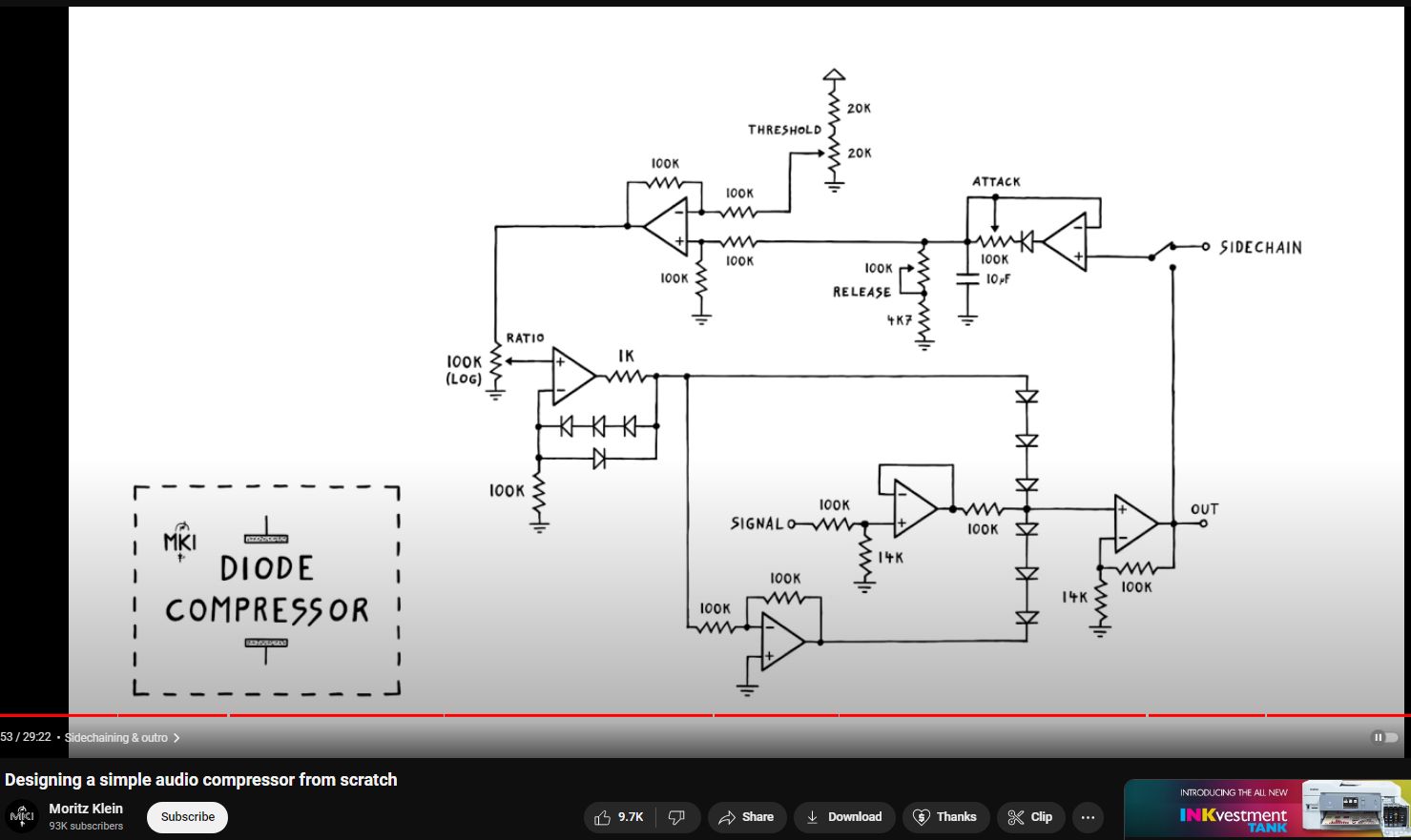Great technical explanation of all parts of an audio compressor circuit
CGPT
Audio level dynamic compression is a fundamental concept in audio engineering, widely used in music production, broadcasting, and live sound reinforcement. It involves reducing the dynamic range of an audio signal, which is the difference between the loudest and quietest parts of the signal. The purpose of dynamic compression is to make audio more consistent in volume, enhance sound quality, improve speech intelligibility, and protect audio equipment from signal peaks that might cause distortion or damage.
### Basic Principles of Dynamic Compression
**Threshold**: The level above which compression is applied. Signals below this level remain unaffected.
**Ratio**: Determines how much compression is applied once the signal exceeds the threshold. A higher ratio results in more significant compression.
**Attack Time**: How quickly the compressor starts to work after the signal surpasses the threshold.
**Release Time**: How quickly the compressor stops affecting the signal once it falls back below the threshold.
**Make-up Gain**: After compression, the overall level of the signal is lower. Make-up gain is applied to bring the level back up.
### Electronic Circuit Designs for Dynamic Compression
Dynamic compression can be achieved through analog or digital means, each with specific electronic techniques:
#### Analog Compression
Analog compressors use electronic circuits to achieve compression, often employing vacuum tubes, VCA (Voltage Controlled Amplifiers), FET (Field-Effect Transistors), and optical components.
– **VCA Compressors**: Use a VCA to control the gain based on the input signal’s voltage. These are known for their precision and versatility.
– **Optical Compressors**: Use a light-dependent resistor and a light source (LED or electroluminescent panel) to create gain reduction. The intensity of the light changes with the input signal, altering the resistance and thus the compression. Optical compressors are prized for their smooth, musical compression.
– **FET Compressors**: Utilize FETs to mimic the operation of a variable gain device. FET compressors are known for adding a warm, aggressive character to the sound.
– **Tube Compressors**: Employ vacuum tubes in their gain reduction circuitry and are celebrated for the warm, rich tones they impart due to tube saturation.
#### Digital Compression
Digital compressors use algorithms to model the behavior of analog compression or create new forms of compression. They are implemented in software (as plugins for digital audio workstations) or in digital hardware units. Digital compression offers precision, recallability, and the ability to precisely shape the compressor’s behavior through advanced algorithms.
### Electronic Techniques in Compression
– **Side-chain Processing**: Allows an external signal to trigger the compressor, enabling creative effects like ducking, where music automatically lowers in volume when speech is detected.
– **Knee Control**: Adjusts how abruptly or smoothly compression is applied as the signal crosses the threshold. A “soft knee” provides gradual compression, making it less noticeable.
– **Look-ahead**: Digital compressors can delay the audio signal slightly to “look ahead” and apply compression just before a loud peak occurs, improving the handling of transients.
Dynamic compression is a powerful tool in audio production, offering both corrective and creative control over sound. Whether through analog circuitry or digital processing, understanding and skillfully applying compression can significantly enhance audio quality and impact.
